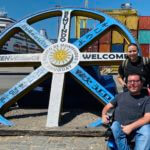Buenos Aires is a city that I have wanted to visit for years. I dreamed of visiting the colorful La Boca area, watching a tango show, and seeing the famous balcony where Madonna sang “Don’t Cry For Me Argentina” in the movie Evita. From my research, it seemed like Buenos Aires, Argentina certainly had a lot to offer, but how wheelchair accessible could it be? I was on a mission to find out during my recent trip.
The capital city of Buenos Aires was the first destination on my recent cruise around Antarctica and South America. I had two days to explore Buenos Aires before getting on our cruise ship and heading toward other exciting ports of call such as Montevideo, Ushuaia, Santiago, and Antarctica of course. In that short amount of time, I tried to see as much as possible.
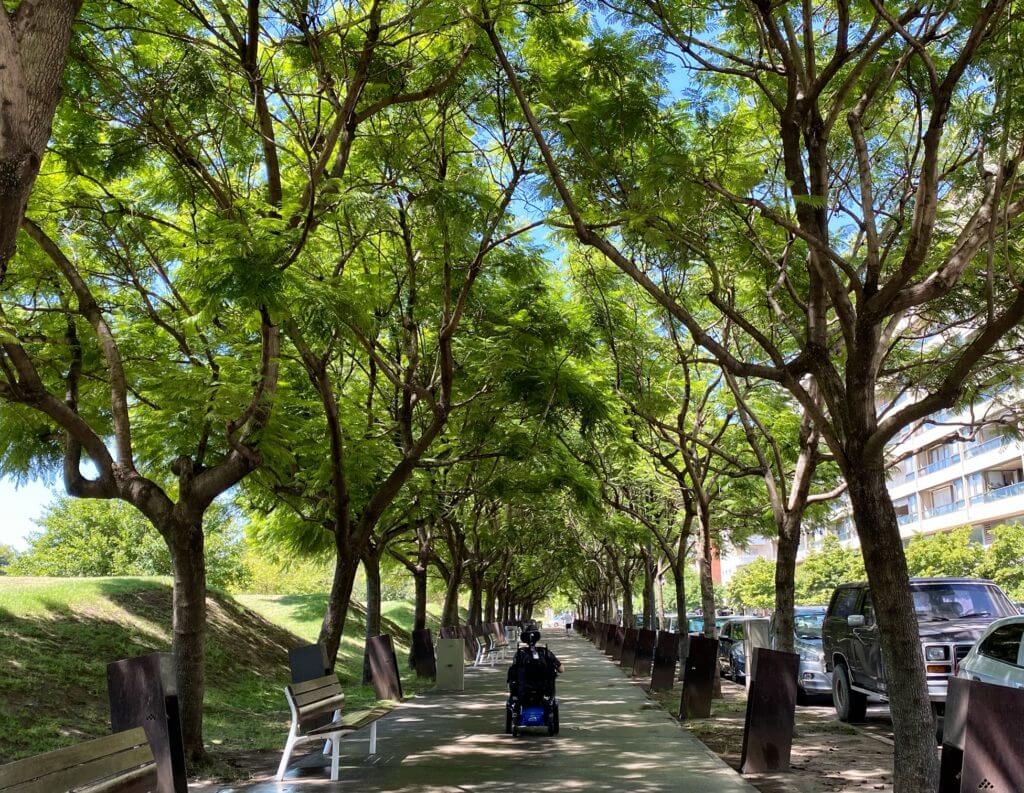
From going on a wheelchair accessible tour of Buenos Aires with Latin America for All and seeing the most notable sights to staying in one of the most beautiful hotels I’ve ever been in, my two days in the city were extraordinary and I am already dreaming of my next visit. Here’s my wheelchair accessible Buenos Aires travel guide, including things to do, where to stay, and how to get around –

Wheelchair Accessible Things to Do in Buenos Aires
Enjoy a tango show
When I started planning what to do in Buenos Aires, the number one item on my list was seeing a tango show. The Argentine tango originated in the streets of Buenos Aires and Montevideo, Uruguay in the late 1800s, and it’s now a fixture of Argentine culture. Seeing an authentic tango show in Argentina is something that everyone needs to do at least once and I was excited to finally seize the opportunity.
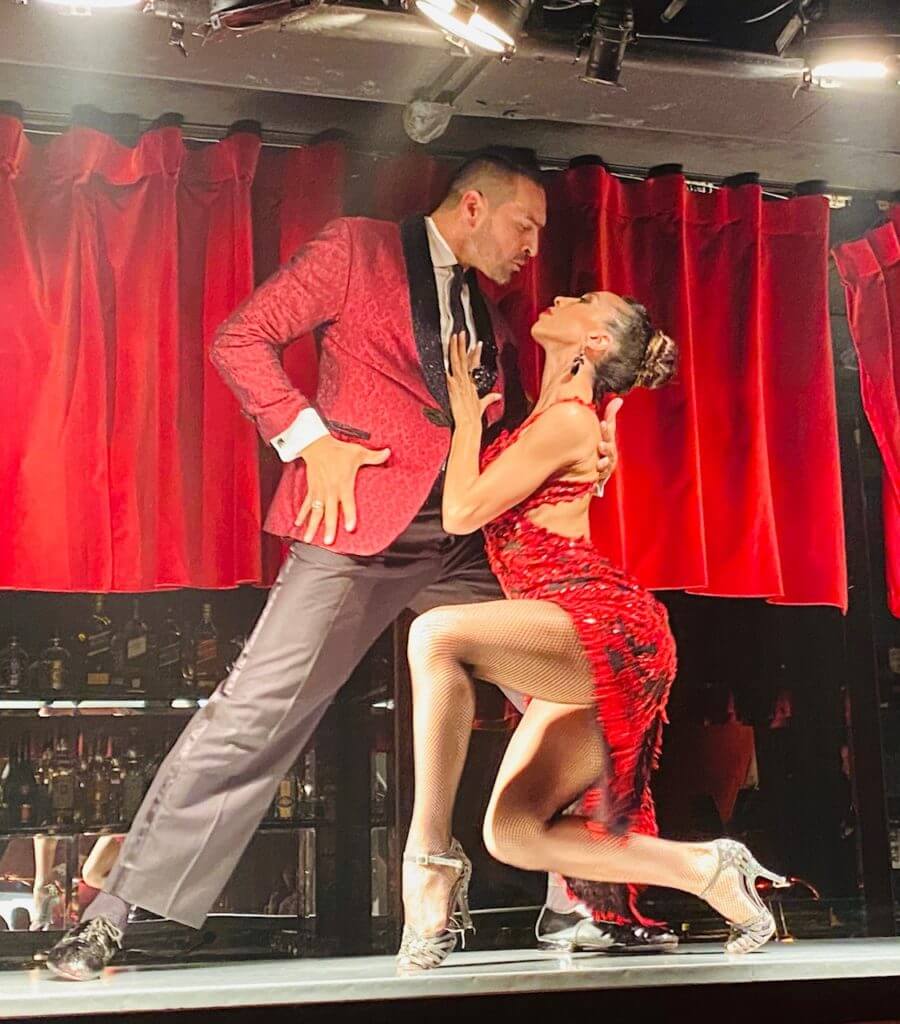
There are many different tango shows in Buenos Aires to choose from, but Rojo Tango is consistently rated the best. Since I didn’t know when I’d ever be back in Buenos Aires, I decided to splurge on this once-in-a-lifetime experience and get tickets for Rojo Tango. It was $260 USD per person for the show and dinner, but if you wanted to see the show and skip the dinner, it was a bit cheaper at $200 USD.
Rojo Tango is located inside Faena Hotel, which is where I stayed during my time in Buenos Aires (more info about the hotel is at the end of this blog post). There was a ramp to the seating area, so I had no problems with accessibility. The room is very small, so no matter what table you’re seated at, you’ll have a fantastic view of the performers.

I opted for the dinner and show, and both exceeded my expectations, which were already pretty high. Dinner began at 8:30pm and the tango show started at about 10pm. For dinner, I had shrimp and potato salad as my appetizer, salmon with goat cheese and a corn cake as my main course, and banana mousse with caramel and olive cake for dessert. All of the dinner items were delicious that I had, but I’d especially recommend the shrimp and potato salad appetizer and the banana mousse dessert. They were so good!! Wine, champagne, and soft drinks are included in the price as well.

After eating dinner and enjoying some drinks, it was time for the big event – the tango show! The show lasted for nearly two hours and I was in absolute awe the entire time. The talent of the singers and dancers absolutely blew me away. I’m not sure what I really expected Argentine tango to be like before seeing the show, but I never expected that amount of talent. It’s truly incredible what they do.

I would 100% recommend seeing Rojo Tango while in Buenos Aires. Is it a bit expensive? Yes, but it was worth every penny and was one of the greatest shows I’ve ever seen.
Watch the Floralis Genérica bloom
As one of the most popular landmarks in the city of Buenos Aires, the Floralis Genérica is a must-see! This giant metal flower weighs a whopping 18 tons, is 75 feet tall, and stretches from 52 feet to 105 feet wide when blooming.
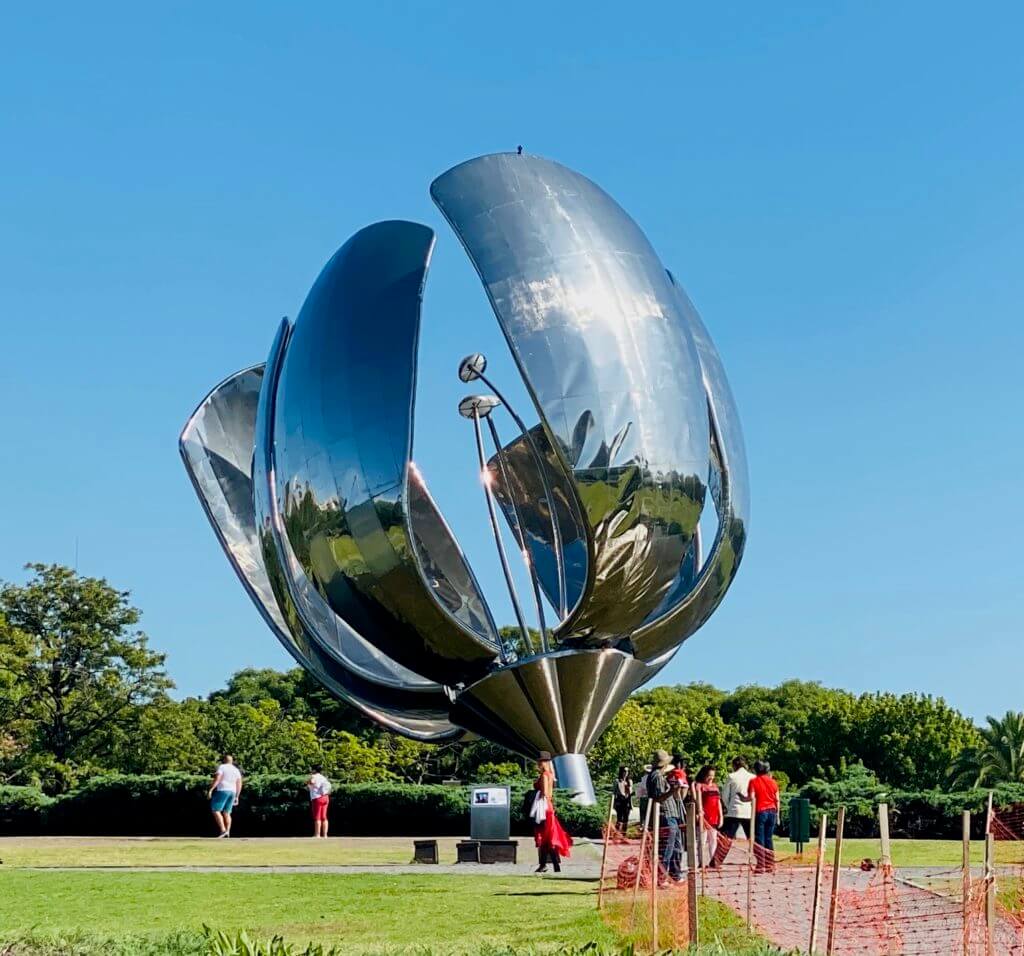
Every morning at 8am, the enormous petals open and then they close at sunset. It takes about 20 minutes for the petals to fully open and it’s a sight that is pretty remarkable. Even if you can’t get there at 8am to see it actually bloom, be sure to view it at some point during the day. The petals stay open all day, so it makes for a nice photo-op.
Argentine architect, Eduardo Catalano, designed and paid for the Floralis Genérica, which began blooming in 2002. The flower is meant to symbolize hope being reborn every morning when it opens and it’s a good reminder to enjoy every day.
Check out Plaza Intendente Alvear
Plaza Intendente Alvear is a beautiful outdoor space. It’s home to street vendors, but they don’t have the typical souvenirs that you’ll find in many other parts of Buenos Aires. You won’t find any Hard Rock Cafe t-shirts or mass-produced magnets here. Instead, you’ll discover authentic and completely original artwork by local artists.

I enjoyed rolling around and admiring all of the art. It was extremely impressive and I managed to talk with a few local artists as well. If you want to get a feel for the artistic influence in Buenos Aires, this is a fantastic place to visit. You could also just relax in the plaza and do some people-watching. This is a popular area, so you definitely won’t get bored here.

Just across the plaza is the Basilica of Our Lady of the Pillar, which was completed in 1732 and is the second-oldest church in Buenos Aires. The church is wheelchair accessible to enter and I rolled around inside of it for about 15 minutes.
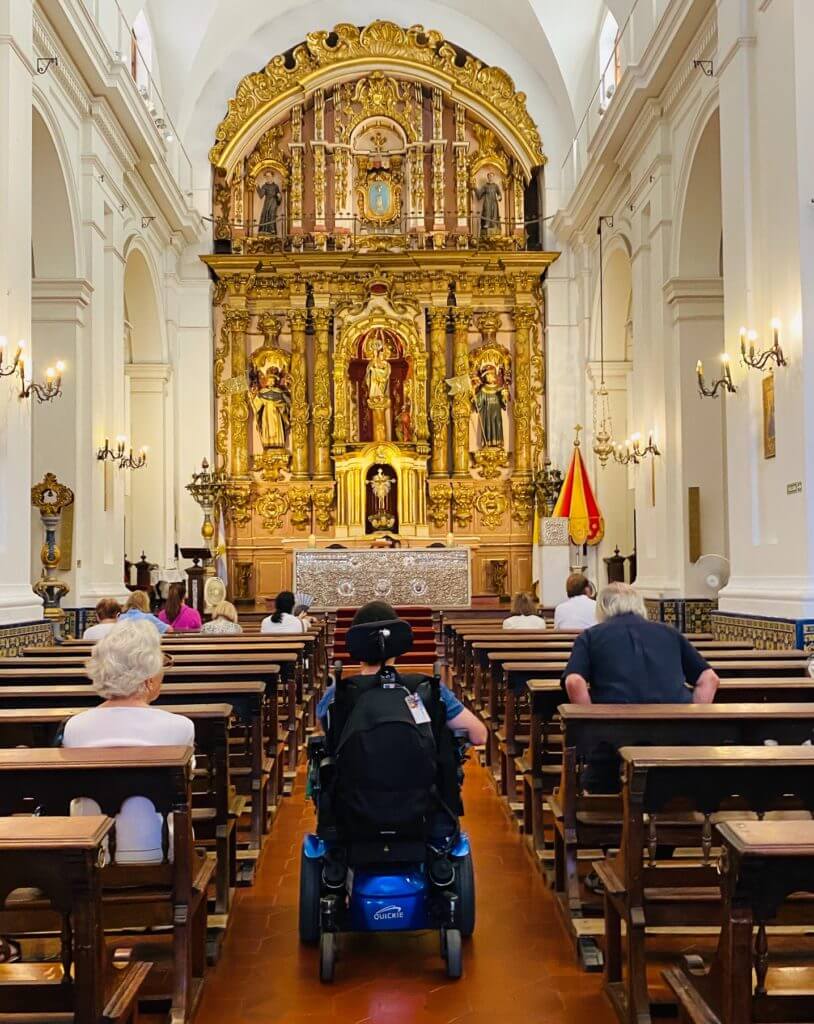
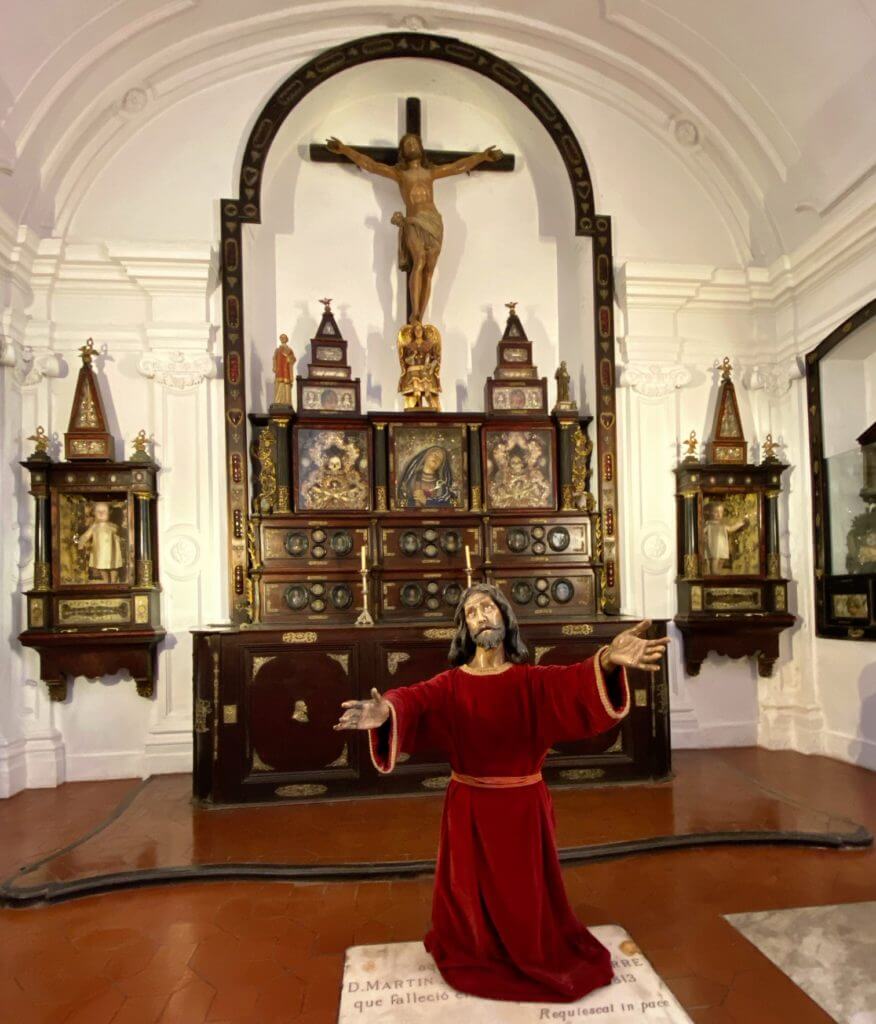
The Basilica of Our Lady of the Pillar is beautiful on the outside, but to truly take in its beauty, you have to see it from the inside. The church has a baroque style, which doesn’t disappoint.
Wander around the beautiful Recoleta Cemetery
Directly beside the Basilica of Our Lady of the Pillar is the Recoleta Cemetery, which is a must-do for everyone visiting Buenos Aires. I’ll be honest, I’m usually not a huge fan of touring cemeteries. They tend to freak me out somewhat, but Recoleta Cemetery is stunningly gorgeous and this was one of my favorite places that I visited in the city.

There are over 6,400 statues, sarcophagi, coffins, and crypts at Recoleta and the cemetery covers about 14 acres. The main entrance of the cemetery wasn’t accessible, but I was able to enter via a separate entrance. Once inside the cemetery, it was easy to maneuver as a wheelchair user, as the walkways were paved and rather wide.
Many of the mausoleums are immaculately decorated, so plan to spend at least a couple hours here if you want to take your time and admire it all. The most beautifully designed mausoleum, in my opinion, was the one for the Paz family. It was a black stone structure with huge marble angels.
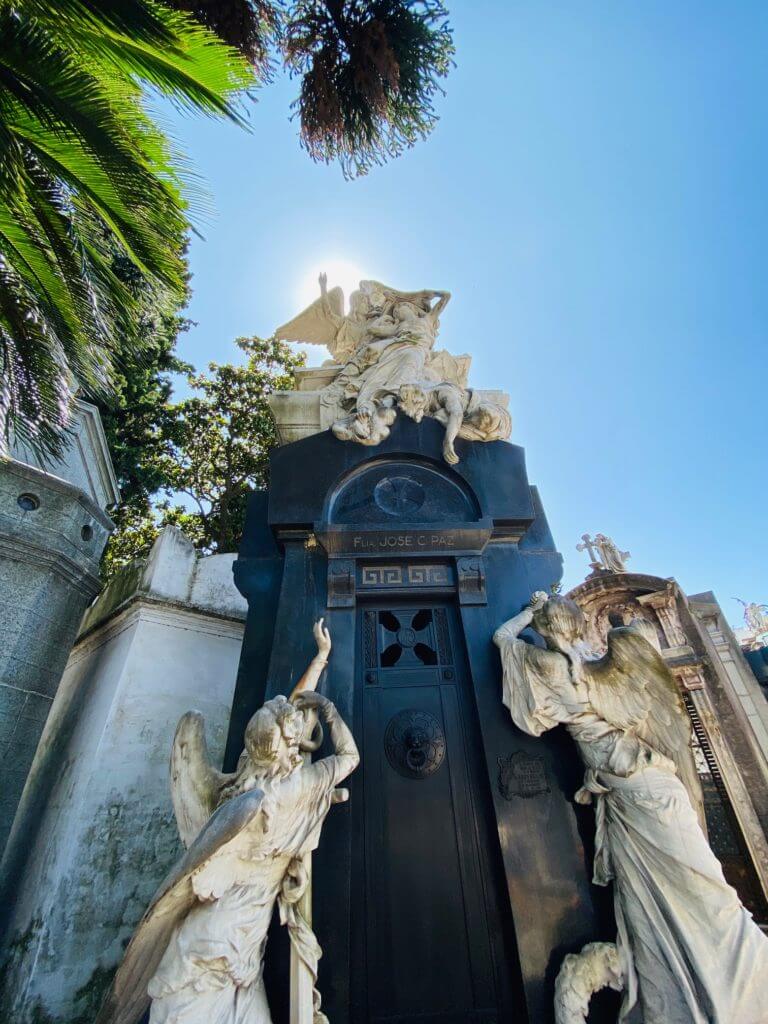
Another must-see mausoleum is the one of Liliana Crociati. She died while on her honeymoon in Austria in the 1970s, but her parents reconstructed her bedroom inside the tomb. In front of the tomb is a statue of Liliana and her pet dog.
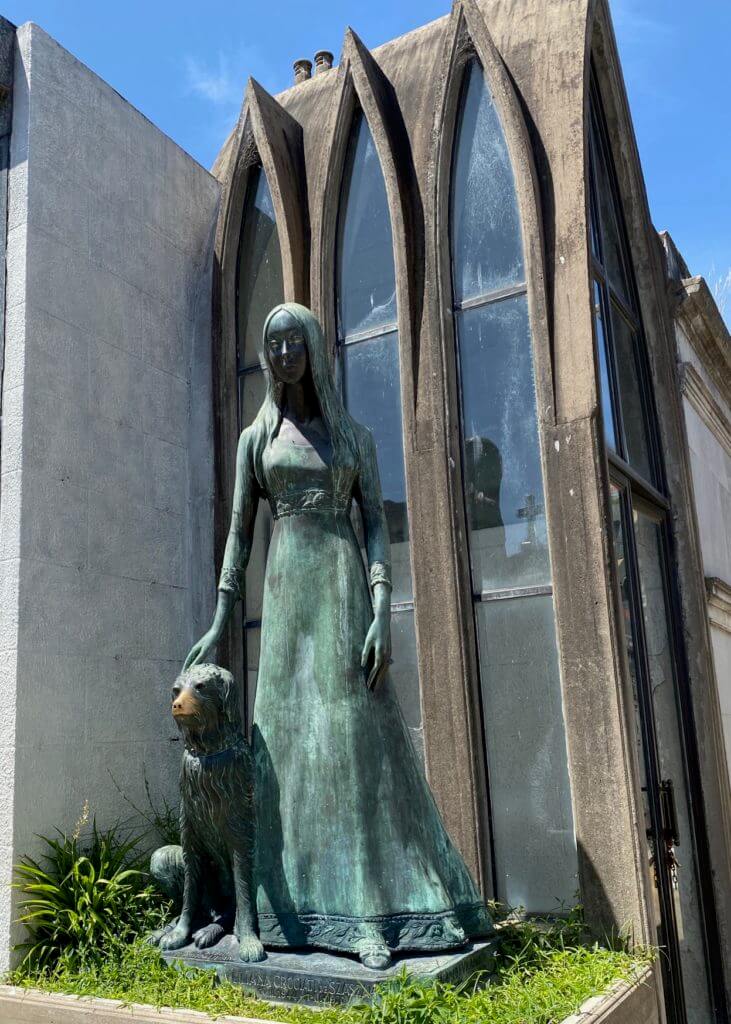
While the mausoleums for the Paz family and Liliana Crociati are spectacular, the most popular tomb is the one for Eva Peron (Evita).
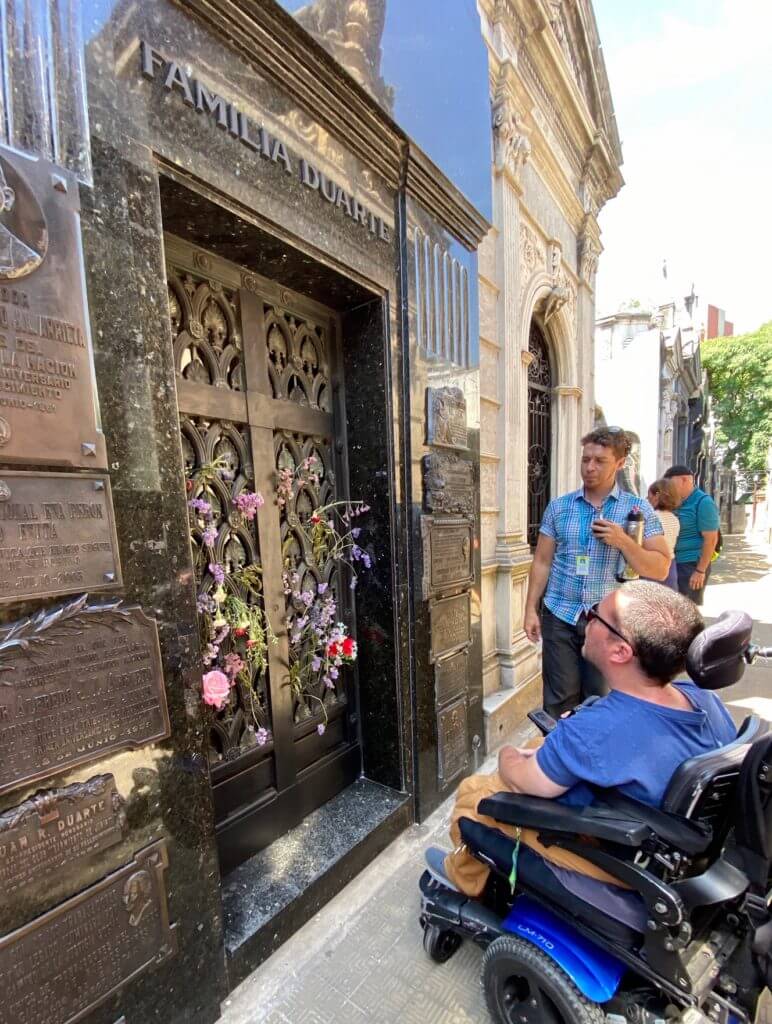

Evita was the First Lady of Argentina from 1946 until 1952, when she died. Her story is an amazing one and has even been chronicled in the 1996 film, Evita, starring Madonna. Even though her burial site isn’t as exquisite as some of the others in Recoleta Cemetery, it’s undoubtedly the prime attraction.
See the Presidential Palace
Known as Casa Rosada, the presidential palace is another iconic landmark in Buenos Aires. Its signature pink color stands out in the Plaza de Mayo and makes it worth seeing, even if you don’t go inside.
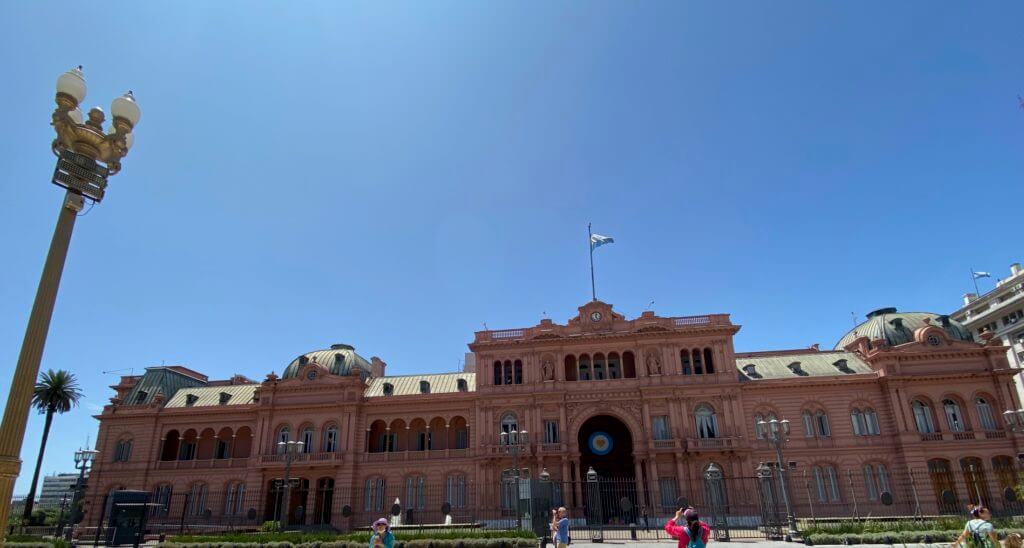
I didn’t go on a tour of the Casa Rosada, but guided tours are available if you’d like to join one. Tours are conducted in English and Spanish, and tickets can be reserved by clicking here.
Casa Rosada houses the President’s office, but he does not live here. The pink palace is most known for being where Juan and Eva Peron addressed Argentinian citizens in the 1940s and early 50s. From the balcony, they spoke to the masses.
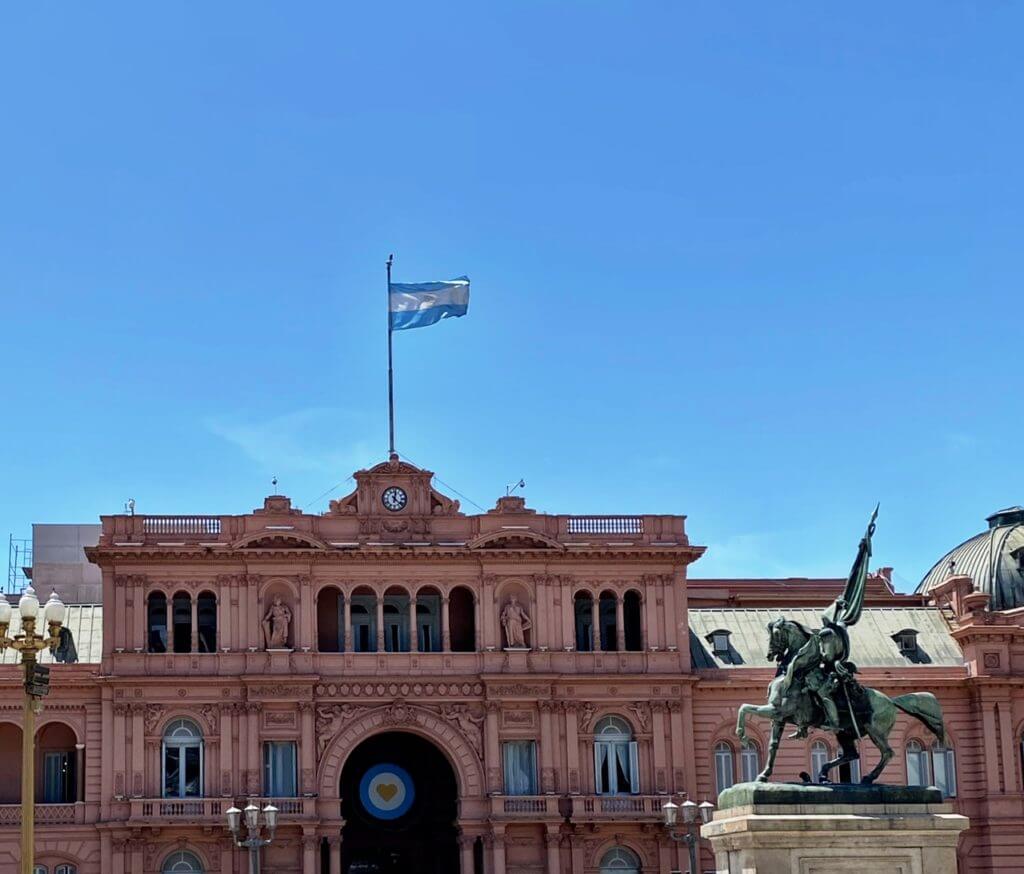
In the movie Evita, Madonna also sang “Don’t Cry for Me Argentina” from Casa Rosada’s balcony. It was cool to see it in person, as that is by far the most iconic scene of the movie.
Explore the colorful La Boca area
I absolutely loved seeing a tango show, wandering around Recoleta Cemetery, and enjoying Buenos Aires’ other points of interest, but my favorite thing that I did was exploring La Boca. La Boca is a working-class neighborhood and is famous for its colorful houses. Many say that it’s the most Instagrammable spot in the city and I would heavily agree.
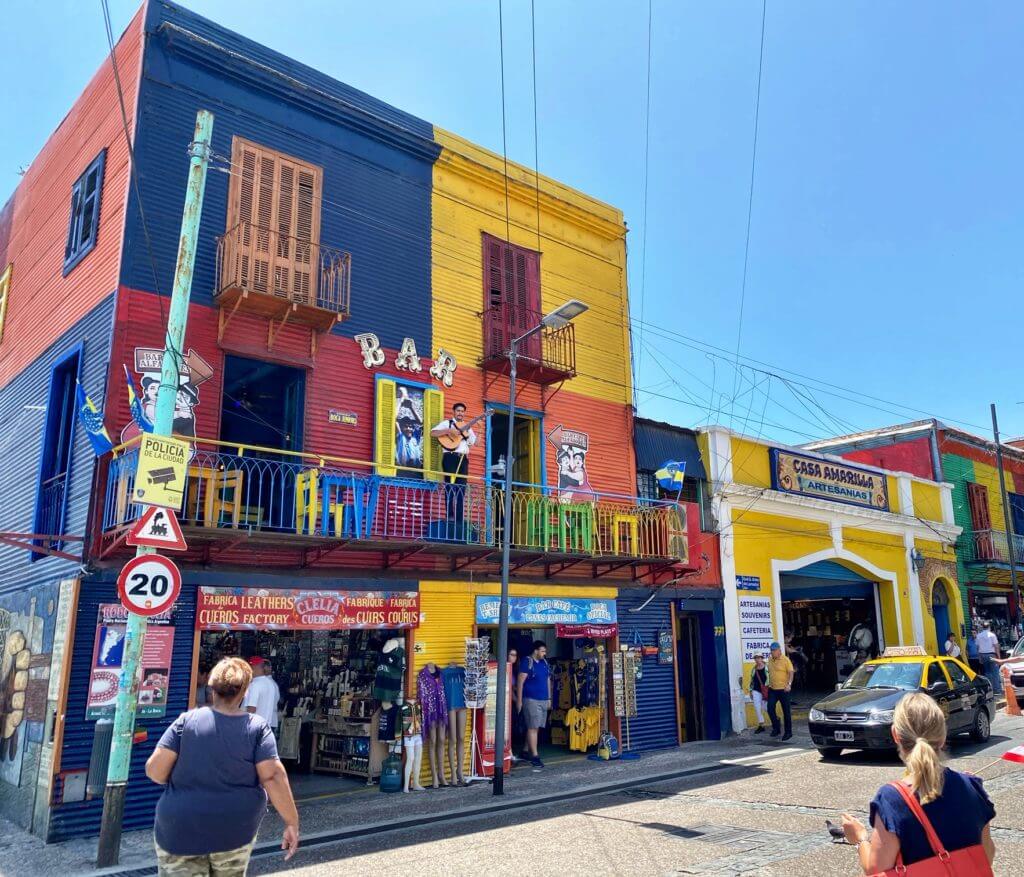
In the late 19th and early 20th centuries, La Boca was home to the city’s largest port. Immigrants arrived in the area and set up shop, building homes from leftover scrap material that they received from building ships. You can still see the houses in La Boca, but they are much more colorful than they were in the nineteenth century.
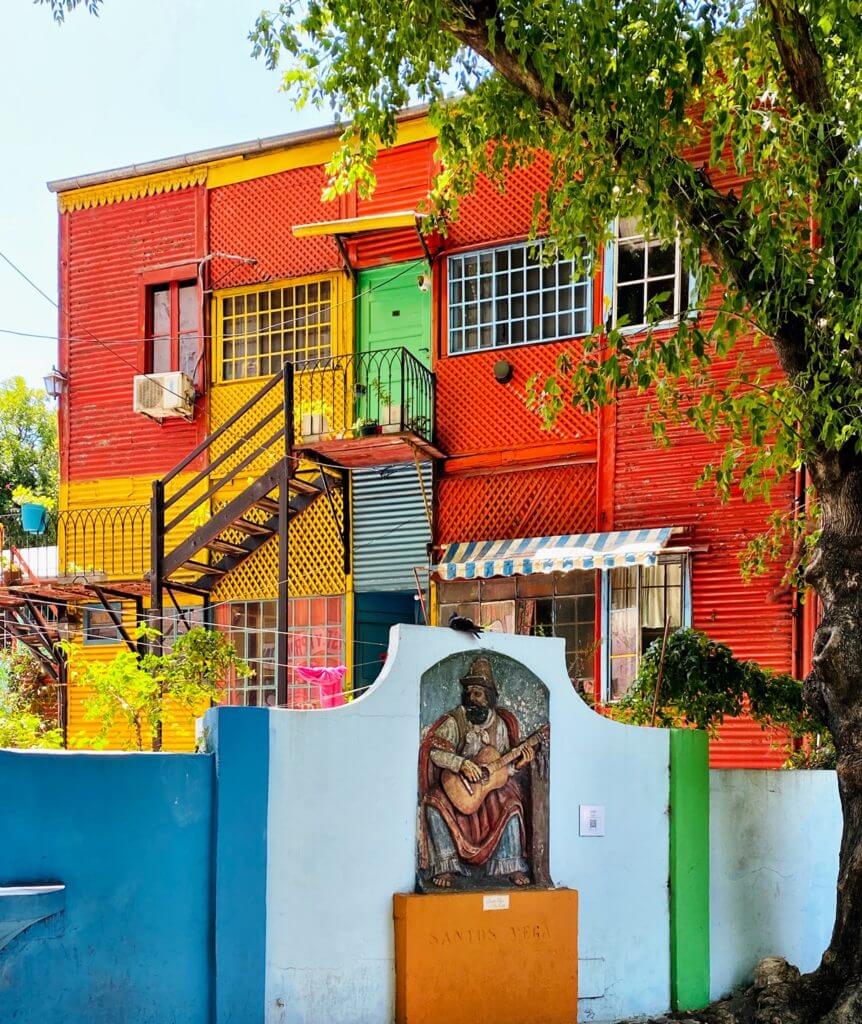
In the 1960s, Benito Quinquela Martin, a local artist, decided to brighten his neighborhood. He painted many of the buildings a variety of different colors, turning the streets of La Boca into one of Buenos Aires’ top attractions.
Today, there are numerous souvenir shops and restaurants in La Boca, making it an area filled with tourists. Accessibility is a bit hit-or-miss, as most shops do have a step to get inside, but there are souvenir options on the street as well. Most restaurants offer outdoor dining, so that’d be an accessible option if you’re hungry for some Argentine food.

Many artists are on La Boca’s streets and alleyways as well, and I was happy to see one artist in a wheelchair. His name was Carlos Sosa and he actually painted with his mouth. His paintings were beautiful, so of course I bought one to remember my time in Buenos Aires. Carlos also challenged me to a wheelchair race, which I was thrilled to partake in. Unfortunately, he beat me by a long shot, but it was the most fun experience of my time in Argentina. I’ll never forget my encounter with Carlos!

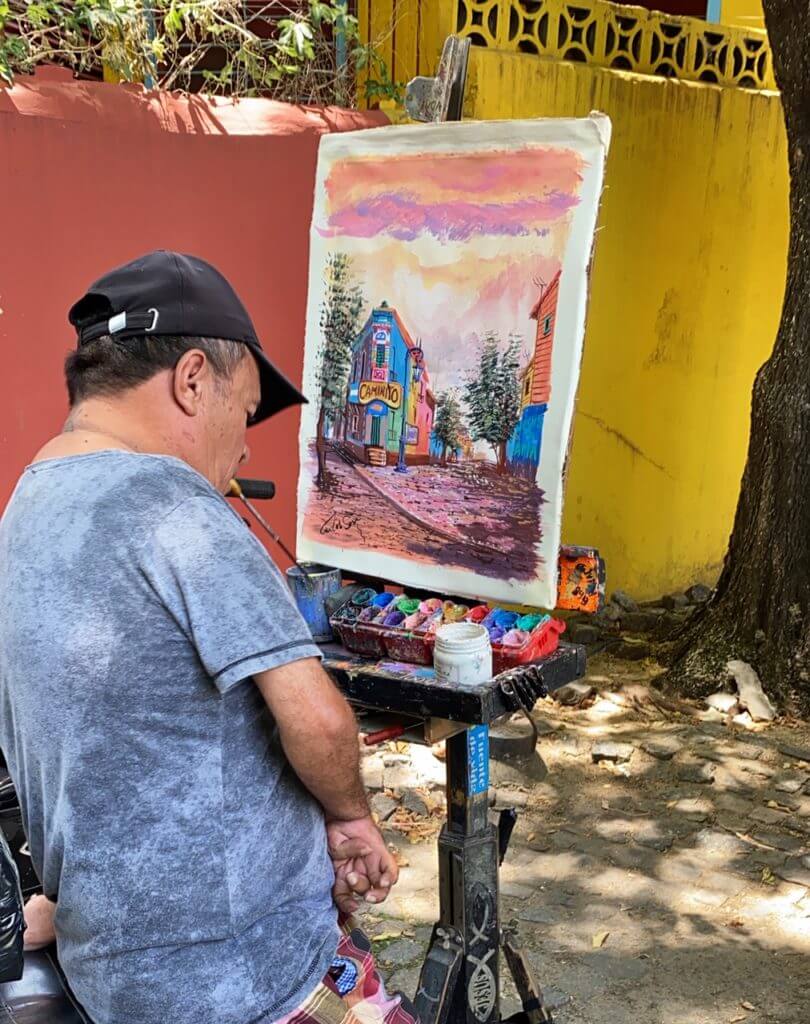
As you can see, Buenos Aires has some incredibly wheelchair friendly things to do, but where should you stay while in the city? Keep reading to learn about where I stayed and what I liked/didn’t like about it.
Where to Stay in Buenos Aires
Faena Hotel
I booked a wheelchair accessible room at the Faena Hotel for my time in Buenos Aires. It’s a five star, luxurious hotel and was named one of the top five hotels in all of Argentina by Condé Nast Traveler in 2018.
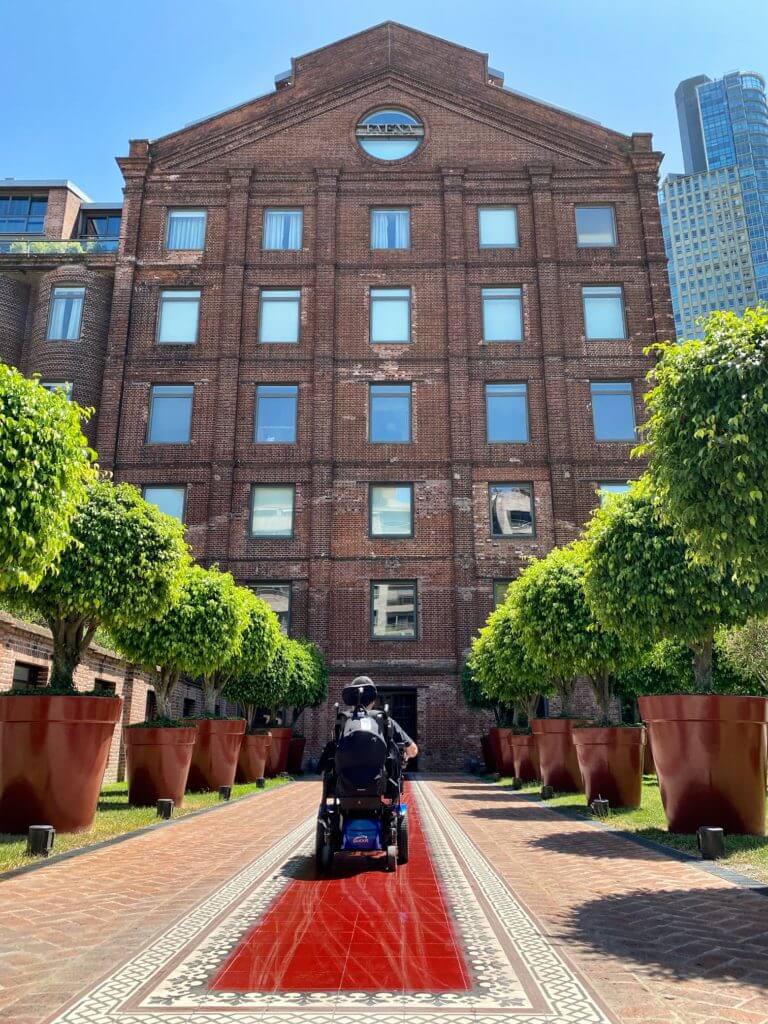
As soon as I entered the hotel, I was met by friendly members of the staff and they guided me down a long red carpet to check-in. After a quick check-in process, I was shown to my room. I stayed in a wheelchair accessible room and it was spacious enough for my needs. A hoyer lift could roll under the bed, as it had an open frame.


In my bathroom, there was a nice roll-in shower and a fold-down grab bar on the left side of the toilet (left side if you’re sitting on the toilet). There was not a shower chair, but I took my own, so I didn’t need one to be provided.


Overall, the room worked great for me. I stayed at this hotel pretty much just because the Rojo Tango show takes place here, but I was pleasantly surprised by the accessible room and other aspects of the hotel.
The interior design of Faena Hotel is exquisite, from the grand hallway to the shops and on-site restaurant. I had the breakfast buffet in the restaurant and it was spectacular. There were a large variety of food items to choose from.

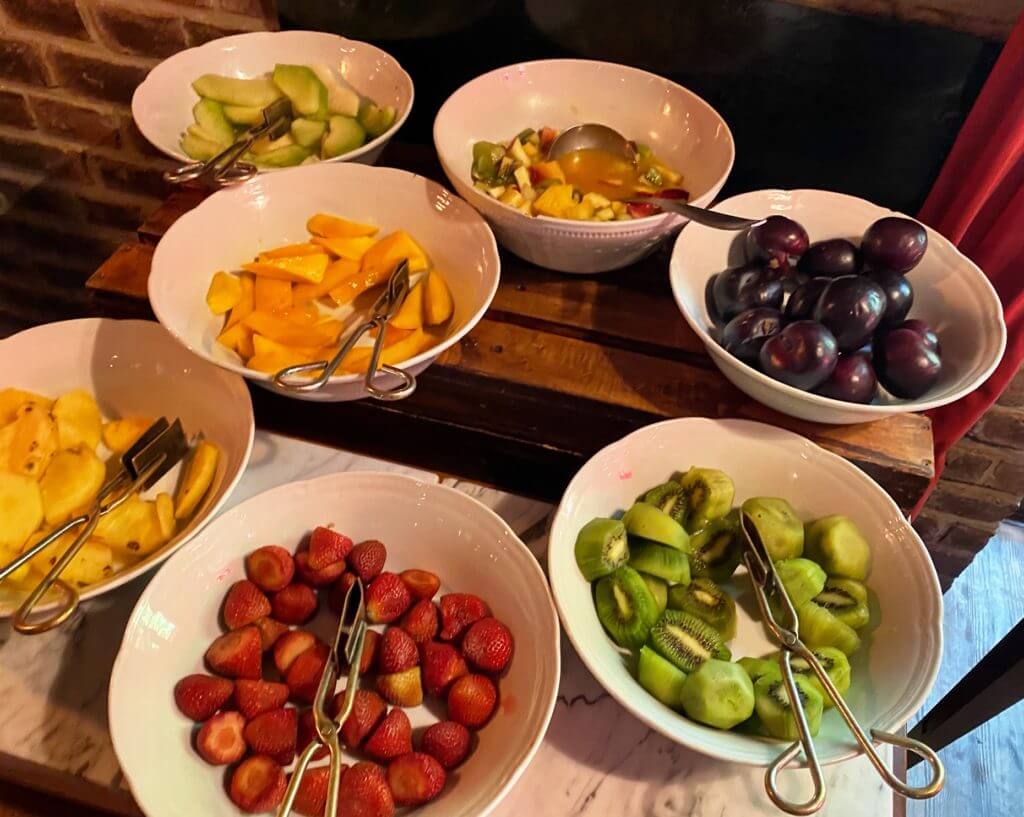
Where the hotel failed in regards to accessibility was the pool and one of the hotel’s bars. There was a step to get to the bar and dining area across from the reception desk. And there was a step to get to the pool area and no pool lift to get in the water. I was disappointed, but since my stay at Faena Hotel was rather short, I didn’t really have time to relax in the pool anyway.
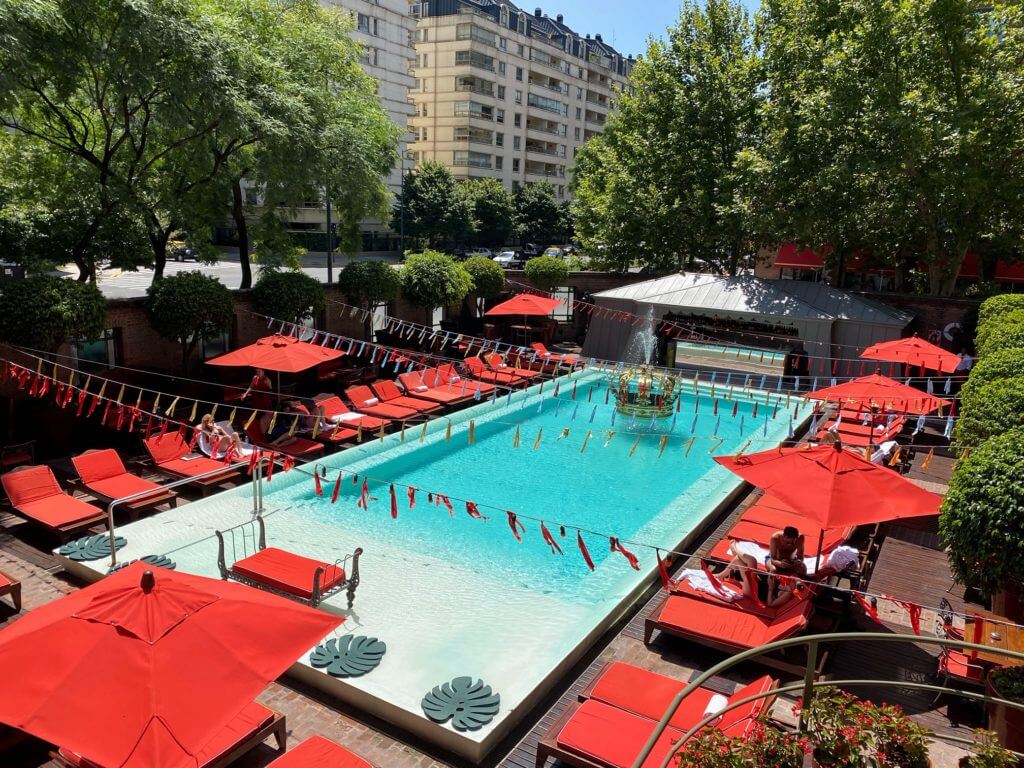
Faena Hotel is an extremely nice place to stay in Buenos Aires, but like most accommodations in South America, it could be more accessible for wheelchair users. If you’ll only be staying a couple nights and don’t want to swim in the pool, I would definitely recommend this hotel. I immensely enjoyed my stay and would stay there again (but please fix the pool!!).
Buenos Aires is a vibrant South American city with a plethora of things to do. As a wheelchair user, I found the city to be quite accessible, but I would recommend touring and getting around with the assistance of Latin America for All. The company specializes in wheelchair accessible tours of Argentina and had accessible transportation, which made it easy to get from place to place.
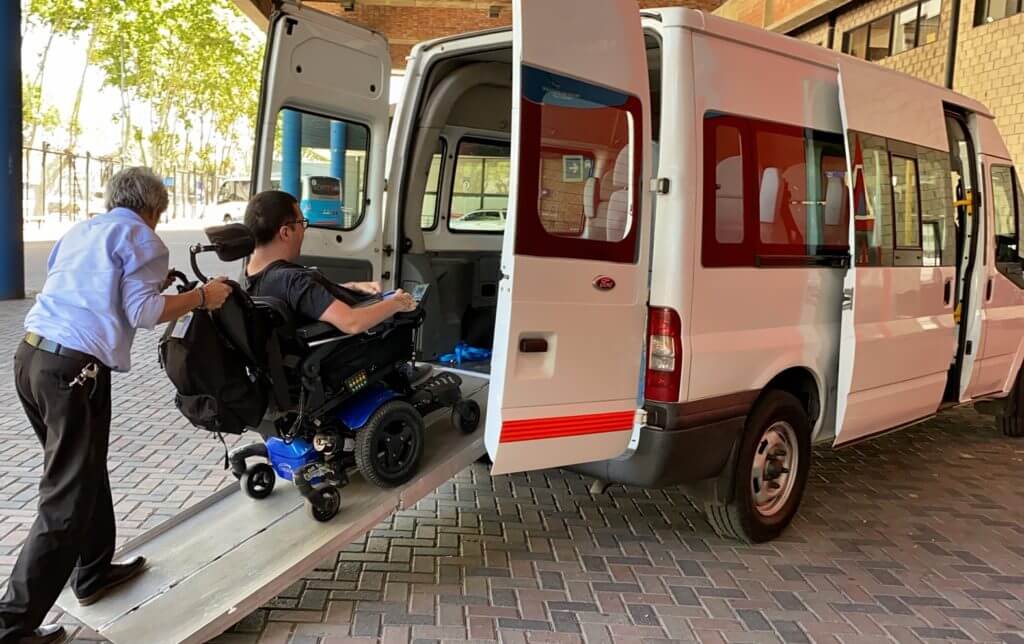
My time in Buenos Aires was rather short, but I can’t wait to get back in the city and explore more. Whether you dream of witnessing the magic of Argentine tango or just want to drink all of the Malbec wine that you can get your hands on, Buenos Aires is sure to win you over, no matter what your abilities are.
.
.



